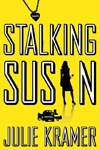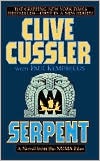Recently a friend asked for writing advice on behalf of her husband, who started writing a book a few yea rs ago but hasn’t made much progress.
rs ago but hasn’t made much progress.
“Let me guess,” I asked. “He’s right around the fifty page mark.” She double-checked with him, and he’d stopped at sixty pages even.
I’m willing to bet that most of the people who never finish writing a book stall out right around that point, somewhere between 40-60 pages. And here’s my theory as to why.
After months or years of talking about writing a book (because at least as far as my experience at cocktail parties dictates, almost everyone believes they have a book in them), they’ve finally sat down and hammered some of those words on to the page! Initially, that’s excitement enough.
Because the outset is always thrilling. And things usually go swimmingly for ten to twenty pages. Then, something gets in the way–maybe they can’t figure out what to tackle next in terms of the storyline, or their day to day life intrudes. So they leave for a bit, and come back to it. Or they manage to overcome whatever hurdle they encountered, plot-wise or life-wise, and forge ahead. Another twenty pages in, they’re feeling a genuine sense of accomplishment. They’re doing what so many people talk about but never achieve–and they’ve already written around fifty pages! The rest should be a breeze, right?
So what do they do at this point?
Most people sit back and say, “Better take a minute to look back over what I wrote, see how it is.”
And that’s their downfall. Because invariably as they go back over their work, they start editing. And editing is generally a slow, time-consuming process. Upon review a significant chunk of what they wrote won’t be as good as they thought it was–which is disheartening. Other sections might be better than remembered, but still a little rough.
So after a few weeks or months of editing, they find themselves back where they ended: at the fifty page mark. And suddenly, having written fifty pages doesn’t feel like such an accomplishment.
Here’s my analogy. Awhile back I read Bill Bryson’s A WALK IN THE WOODS, an extremely funny account of his attempt to hike the Appalachian Trail in its entirety.
After a rough start, the hike was going well. Bryson and his buddy were starting to feel seasoned, like they finally knew what they were doing and had gotten into the rhythm of the trail, so to speak. They stopped at an outfitters in Tennessee. Mounted on the wall was a map of the trail. For fun, they checked out how much ground they’d covered – and realized that they’d only made it through a tiny portion of the entire trail. At that point they flew home, took a break, and met up again later in Virginia, skipping a huge chunk of the hike.
– and realized that they’d only made it through a tiny portion of the entire trail. At that point they flew home, took a break, and met up again later in Virginia, skipping a huge chunk of the hike.
And that’s exactly how it feels to be a writer at the fifty page mark looking up at the mountain of work looming above you. But unlike Bryson, you can’t just jump ahead to page 300. You’ll have to slog through every page.
For many people, that’s just too overwhelming. So they put the book away, resolving to come back to it when they have more time. And more often than not, that time never materializes.
Awhile back I wrote a post about never looking back. Especially for writers setting out to finish their first book, I think that is absolutely critical. If you’ve been through the process before, you know where you’re going to start experiencing that dread, and how to overcome it. You’ve hiked this particular trail. so although you know that at times it will prove relentless, you’ll get through it, the same way you have in the past.
New writers don’t have that experience to fall back on, so they tend to get discouraged. Here’s my advice on conquering the fifty page mark:
- Don’t look back until you have at least the bones of the book laid out in its entirety.
- Accept that your first draft is going to be just that- a draft. Editing can come later, but allow yourself to be just plain bad at times. You can go back and craft every turn of phrase later.
- Even if you only manage to write a page a day, at the end of a year you’ll have a book, more or less. Set small, achievable goals, and feel proud for meeting each of them.
Remember that every writer has been at that exact same spot and felt just as daunted. What separates those who end up finishing with those who don’t has nothing to do with character or skill–it comes down to sheer force of will. As my mom always said, anything worth doing is a challenge. Rise to meet it and you won’t regret it. If nothing else, you’ll have accomplished what you set out to do: you’ve written your book. And no matter where it goes from there, that alone is a victory.












